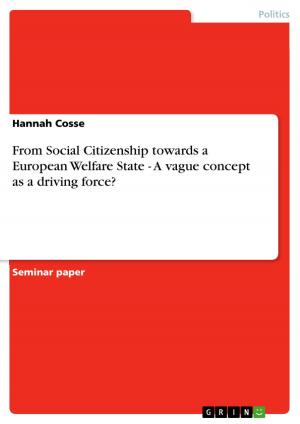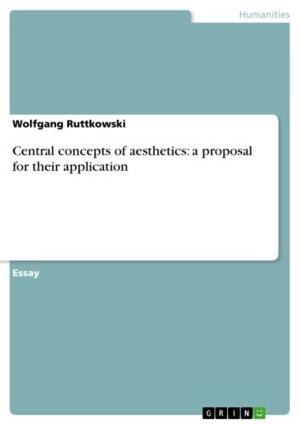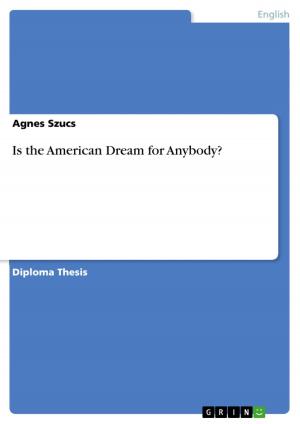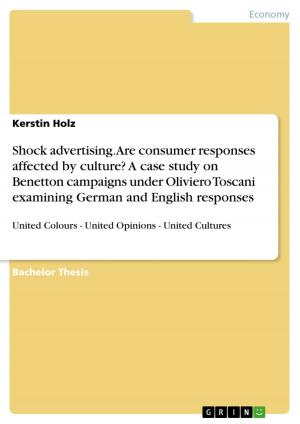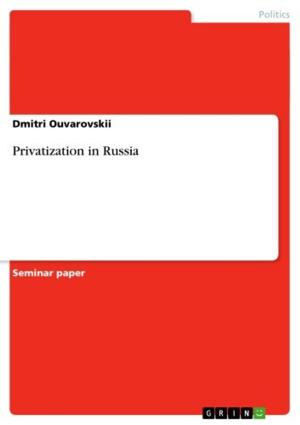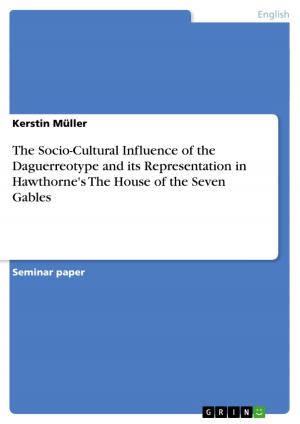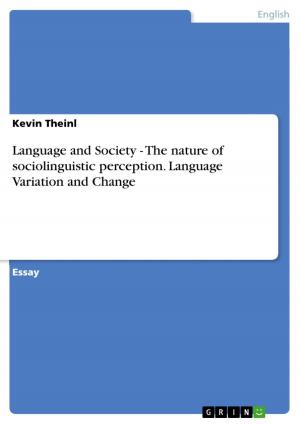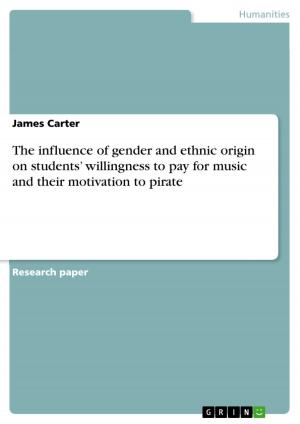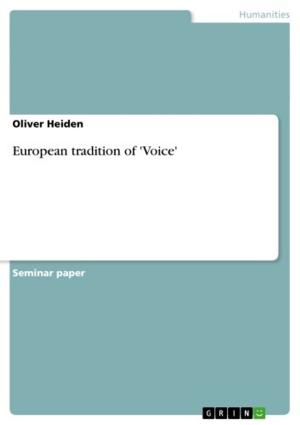Comparison of the supernatural elements in Washington Irving's short stories
Nonfiction, Entertainment, Drama, Anthologies| Author: | Daniel Nienaber | ISBN: | 9783638181518 |
| Publisher: | GRIN Publishing | Publication: | April 8, 2003 |
| Imprint: | GRIN Publishing | Language: | English |
| Author: | Daniel Nienaber |
| ISBN: | 9783638181518 |
| Publisher: | GRIN Publishing |
| Publication: | April 8, 2003 |
| Imprint: | GRIN Publishing |
| Language: | English |
Seminar paper from the year 2002 in the subject American Studies - Literature, grade: 1.3 (A), Bielefeld University (Faculty for Literature Science and Linguistics), course: Seminar: American Literature and Culture, 1800-1865, 9 entries in the bibliography, language: English, abstract: Supernatural elements as a part of literature and art are nowadays very popular. There are different authors like Wolfgang Hohlbein taking up this topic in German literature as well. The short stories 'Rip van Winkle' and 'The Legend of Sleepy Hollow' which were published in 1820, experienced their renaissance in cinema over the past few years. In 1999 the American director Tim Burton, known for his interest in fantastic stories, used 'The Legend of Sleepy Hollow' as a model for his movie simply called Sleepy Hollow. For this term paper it is necessary to take a look at Washington Irving as a romantic writer to understand his works in a wider context. Irving combined European and American aspects of romanticism. The political situation of the U.S.A. around 1800 is also important, because in his works Irving refers to it again and again. He tried to resolve the American identity crisis through his fiction. Furthermore I would like to examine closely what is supernatural about the stories mentioned and I will compare the supernatural elements of the stories. I would like to find out, if there is any difference in Washington Irving's use of the supernatural elements and in which way these possible differences influence the plots of the stories. Before that is possible, at first the phenomenon of 'The Supernatural' has to be defined and the differences between similar phenomena like 'The Fantastic' and 'The Miraculous' have to be pointed out carefully. Chapter four serves this purpose. The knowledge about 'The Supernatural' can then be transferred on the analysis and the comparison in chapters five and six.
Seminar paper from the year 2002 in the subject American Studies - Literature, grade: 1.3 (A), Bielefeld University (Faculty for Literature Science and Linguistics), course: Seminar: American Literature and Culture, 1800-1865, 9 entries in the bibliography, language: English, abstract: Supernatural elements as a part of literature and art are nowadays very popular. There are different authors like Wolfgang Hohlbein taking up this topic in German literature as well. The short stories 'Rip van Winkle' and 'The Legend of Sleepy Hollow' which were published in 1820, experienced their renaissance in cinema over the past few years. In 1999 the American director Tim Burton, known for his interest in fantastic stories, used 'The Legend of Sleepy Hollow' as a model for his movie simply called Sleepy Hollow. For this term paper it is necessary to take a look at Washington Irving as a romantic writer to understand his works in a wider context. Irving combined European and American aspects of romanticism. The political situation of the U.S.A. around 1800 is also important, because in his works Irving refers to it again and again. He tried to resolve the American identity crisis through his fiction. Furthermore I would like to examine closely what is supernatural about the stories mentioned and I will compare the supernatural elements of the stories. I would like to find out, if there is any difference in Washington Irving's use of the supernatural elements and in which way these possible differences influence the plots of the stories. Before that is possible, at first the phenomenon of 'The Supernatural' has to be defined and the differences between similar phenomena like 'The Fantastic' and 'The Miraculous' have to be pointed out carefully. Chapter four serves this purpose. The knowledge about 'The Supernatural' can then be transferred on the analysis and the comparison in chapters five and six.




